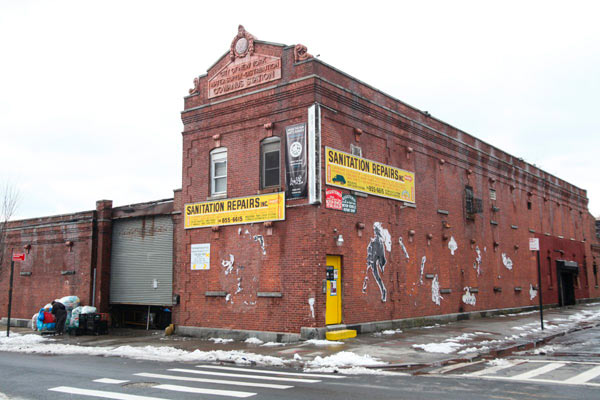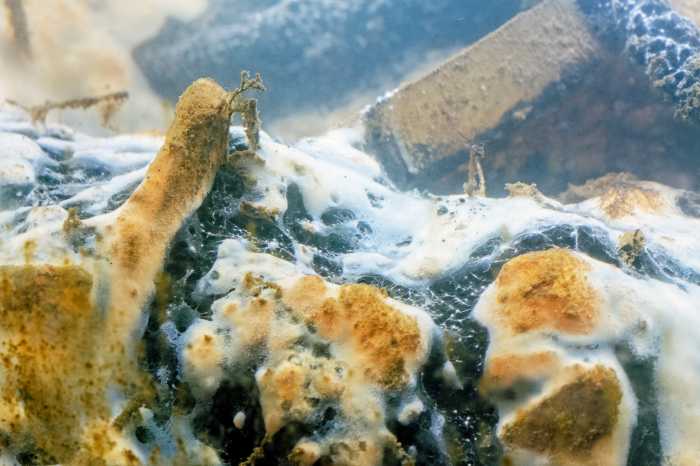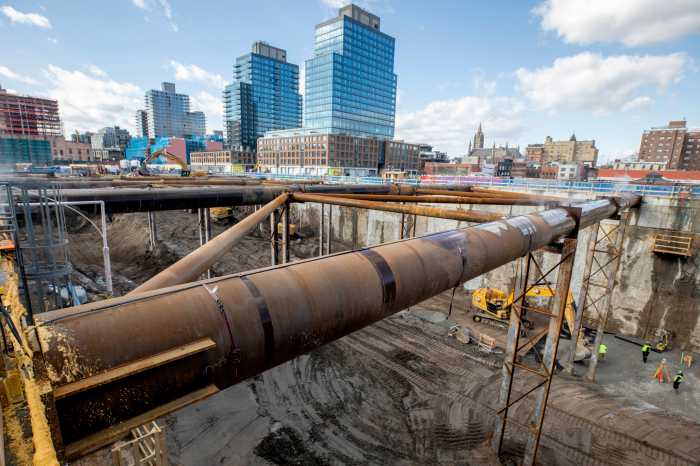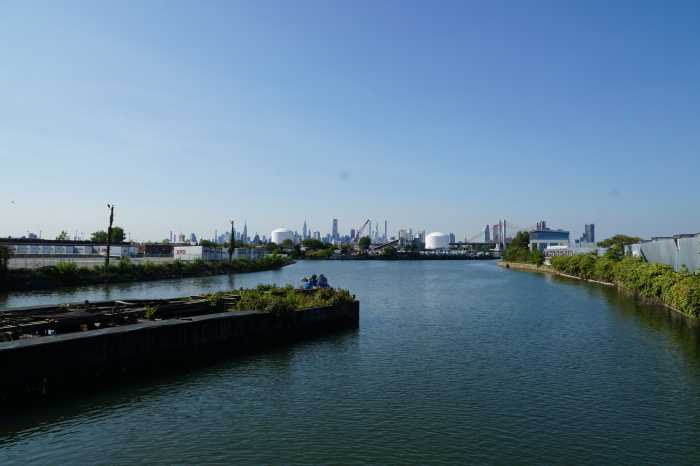This land ain’t their land — for long.
The city moved one step closer to bulldozing the ancient Gowanus Station building after Council on Wednesday approved use of eminent domain to seize its Butler Street lot and neighboring land to make way for two subterranean sewage tanks the Feds’ require for their cleanup of the Gowanus Canal.
Local activists began fighting the plan to acquire the privately owned plot and its neighbor on Nevins Street as locations for the four- and eight-million-gallon tanks that will hold raw waste and storm water shortly after officials kicked off the lengthy Uniform Land Use Review Procedure to authorize eminent domain — which means the land owners have to sell, but receive a market-rate price.
Some impassioned Gowanusites recently went so far as to hold a candlelight vigil for the Station House last Tuesday, pleading that it should be spared from the wrecking ball because it is architecturally and historically significant after the Landmarks Preservation Commission chose not to designate it for preservation last year.
The Environmental Protection Agency officials leading the canal’s cleanse, however, are still deciding whether or not to spare the structure from demolition — a trump card they can pull because the land it sits on would be part of the federally managed Superfund site, according to an agency bigwig in charge of the scrub.
But others applauded Council’s vote, since seizing the land for the sewage-storage tanks could keep Gowanus’s beloved Double D swimming hole from closing for the entirety of what some expect to be a decade-long cleanup, after the Feds initially suggested using ground beneath the pool in Thomas Greene Playground — which also must be purged of chemicals in the project — as the site of the cisterns.
“We are again in support of the solution that saves the park, which is an incredibly important community resource for the thousands of residents that live north of the canal,” said Andrea Parker, the executive director of waterway-advocacy group the Gowanus Canal Conservancy.
All members of the city’s legislative body voted “aye” on the land-seizure proposal, except for Councilmen Brad Lander (D–Gowanus), whose district encompasses part of the canal but wasn’t there to cast his ballot, and Kalman Yeger (D–Midwood), who voted “nay.”
Parker and some other locals are still urging the city to at least save the 1913 structure’s facade, and transform the property above where officials intend to bury the tanks into a community space that tells locals the history of the canal, she said.
“The building is gorgeous, it definitely speaks to a really important part of the neighborhood,” Parker said. “It wouldn’t just be a piece of infrastructure — it would serve the larger needs of the neighborhood.”
But the use of eminent domain is not yet set in stone — Mayor DeBlasio must first sign off on the proposal, and the city still could strike a private deal with the landowners to buy the Butler and Nevins street parcels out right, Parker said.
And if the city doesn’t acquire the land by 2020, the Feds will move forward with their original plan to install the cisterns in the Double D’s grave.
Officials resorting to eminent domain has stirred controversy in the past — more than a decade ago, the state-led Empire State Development Corporation seized a massive swath of land in Prospect Heights to make way for developer Bruce Ratner’s massive Atlantic Yards project, which polarizes locals to this day.
Reps for the Department of Environmental Protection — the city agency in charge of the acquisition — did not respond to a request for comment.
























